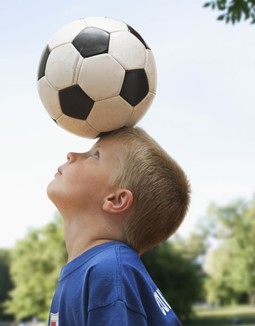Guidance for training in English football has been provided in partnership with key stakeholders across the grassroots and professional game following consultation with coaches and medical experts in football.
The aim is to help mitigate against any potential risks that may be linked to heading the ball, including injuries from head to head, elbow to head, or head to ground contact, and it represents a cautious approach to playing and enjoying football while ongoing research continues in this area.
Players and Parents are asked to be aware of the following recommendations which are in line with the Football Association’s guidance and have been developed to protect players’ welfare. As further research is undertaken to better understand the effects of heading, this guidance will be regularly reviewed and updated.
The Club supports the recommendation that there should be:
- no heading in training for U7s – U11s; and
- a graduated approach to heading for U12s – U16s
For U12s and U13s the priority is still fun, engagement and mastery of both the body and the ball. Players at this age are ready to cope with more decision making, which is reflected in the challenges provided in both training and games. This will still be done within an environment that is both supportive and positive.

So, while there may be a small increase in the number of headers seen in the game at this age, heading remains a low priority when compared to other technical aspects of the game. Coaches will continue to use the time they have with players to maximise the development of other key skills seen more regularly in the game at this age.
For U14s to U16s, as players’ knowledge of the game and physical strength develops, there will be more visible tactical use of restarts and this will lead to an increased number of headers. There are key factors to consider when introducing the technique of heading as part of a balanced programme, which include:
- judging and adjusting to the flight of the ball;
- attacking the ball at an optimum point;
- head contact and ball contact to control the direction and distance of the ball.
Different types of headers will start to be used, so Coaches can introduce position-specific movement patterns but there will be limited heading in training at this age.
It is recommended that heading practice is limited to 10 headers per session and only one session a week where heading practice is included. Players will be asked to take responsibility for monitoring their own heading activity.